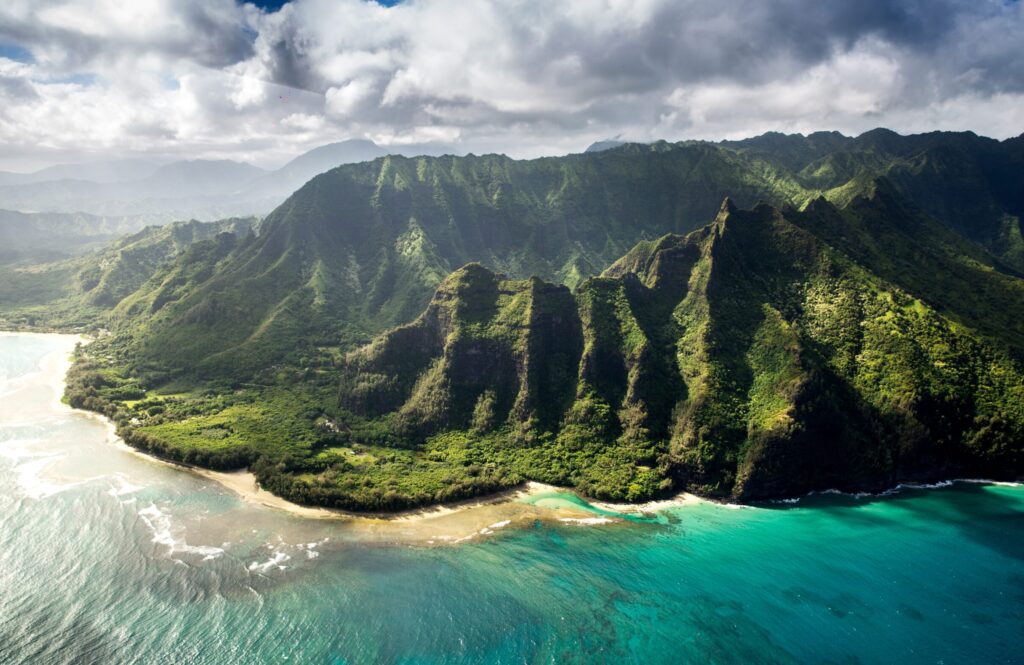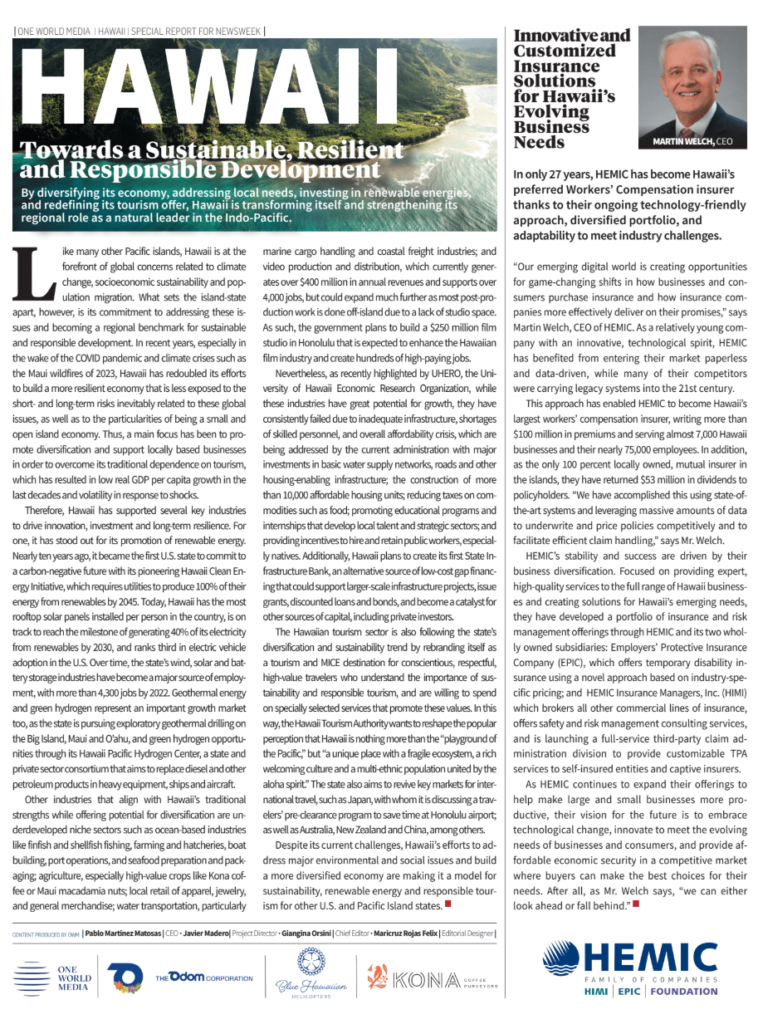Hawaii
Towards a Sustainable, Resilient and Responsible Development

By diversifying its economy, addressing local needs, investing in renewable energies,and redefining its tourism offer, Hawaii is transforming itself and strengthening itsregional role as a natural leader in the Indo-Pacific
Like many other Pacific islands, Hawaii is at the forefront of global concerns related to climate change, socioeconomic sustainability, and population migration. What sets the island-state apart, however, is its commitment to addressing these issues and becoming a regional benchmark for sustainable and responsible development. In recent years, especially in the wake of the COVID pandemic and climate crises such as the Maui wildfires of 2023, Hawaii has redoubled its efforts to build a more resilient economy that is less exposed to the short- and long-term risks inevitably related to these global issues, as well as to the particularities of being a small and open island economy. Thus, a main focus has been to promote diversification and support locally based businesses in order to overcome its traditional dependence on tourism, which has resulted in low real GDP per capita growth in the last decades and volatility in response to shocks.
Therefore, Hawaii has supported several key industries to drive innovation, investment, and long-term resilience. For one, it has stood out for its promotion of renewable energy. Nearly ten years ago, it became the first U.S. state to commit to a carbon-negative future with its pioneering Hawaii Clean Energy Initiative, which requires utilities to produce 100% of their energy from renewables by 2045. Today, Hawaii has the most rooftop solar panels installed per person in the country, is on track to reach the milestone of generating 40% of its electricity from renewables by 2030, and ranks third in electric vehicle adoption in the U.S. Over time, the state’s wind, solar, and battery storage industries have become a major source of employment, with more than 4,300 jobs by 2022. Geothermal energy and green hydrogen represent an important growth market too, as the state is pursuing exploratory geothermal drilling on the Big Island, Maui, and O’ahu, and green hydrogen opportunities through its Hawaii Pacific Hydrogen Center, a state and private sector consortium that aims to replace diesel and other petroleum products in heavy equipment, ships, and aircraft.
Other industries that align with Hawaii’s traditional strengths while offering potential for diversification are underdeveloped niche sectors such as ocean-based industries like finfish and shellfish fishing, farming and hatcheries, boat building, port operations, and seafood preparation and packaging; agriculture, especially high-value crops like Kona coffee or Maui macadamia nuts; local retail of apparel, jewelry, and general merchandise; water transportation, particularly marine cargo handling and coastal freight industries; and video production and distribution, which currently generates over $400 million in annual revenues and supports over 4,000 jobs, but could expand much further as most post-production work is done off-island due to a lack of studio space. As such, the government plans to build a $250 million film studio in Honolulu that is expected to enhance the Hawaiian film industry and create hundreds of high-paying jobs.
Nevertheless, as recently highlighted by UHERO, the University of Hawaii Economic Research Organization, while these industries have great potential for growth, they have consistently failed due to inadequate infrastructure, shortages of skilled personnel, and overall affordability crisis, which are being addressed by the current administration with major investments in basic water supply networks, roads, and other housing-enabling infrastructure; the construction of more than 10,000 affordable housing units; reducing taxes on commodities such as food; promoting educational programs and internships that develop local talent and strategic sectors; and providing incentives to hire and retain public workers, especially natives. Additionally, Hawaii plans to create its first State Infrastructure Bank, an alternative source of low-cost gap financing that could support larger-scale infrastructure projects, issue grants, discounted loans and bonds, and become a catalyst for other sources of capital, including private investors.
The Hawaiian tourism sector is also following the state’s diversification and sustainability trend by rebranding itself as a tourism and MICE destination for conscientious, respectful, high-value travelers who understand the importance of sustainability and responsible tourism, and are willing to spend on specially selected services that promote these values. In this way, the Hawaii Tourism Authority wants to reshape the popular perception that Hawaii is nothing more than the “playground of the Pacific,” but “a unique place with a fragile ecosystem, a rich welcoming culture, and a multi-ethnic population united by the aloha spirit.” The state also aims to revive key markets for international travel, such as Japan, with whom it is discussing a travelers’ pre-clearance program to save time at Honolulu airport; as well as Australia, New Zealand, and China, among others.


